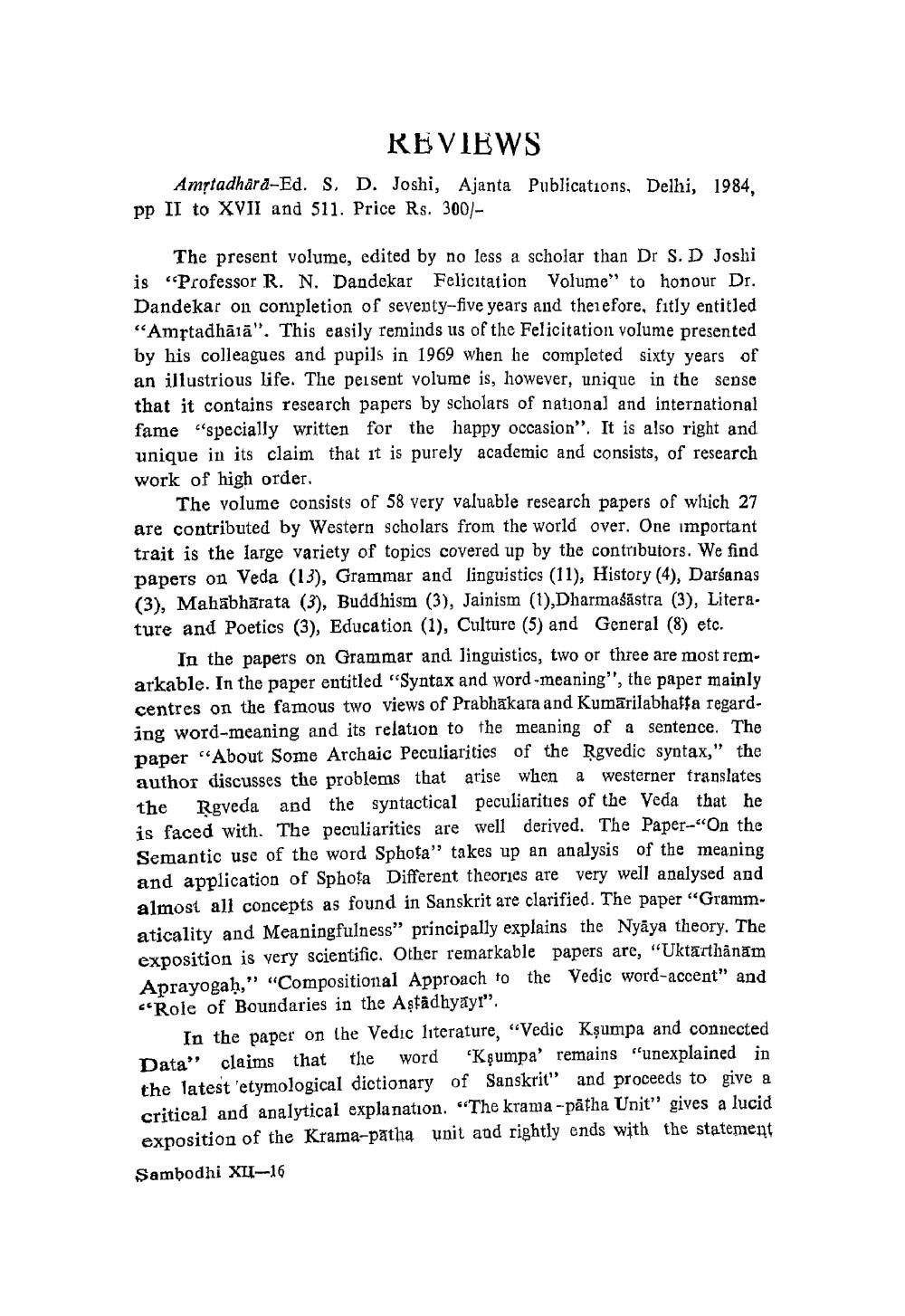________________
REVIEWS Amstadhara-Ed. S. D. Joshi, Ajanta Publications, Delhi, 1984, pp II to XVII and 511. Price Rs. 300)
The present volume, edited by no less a scholar than Dr S. D Joshi is "Professor R. N. Dandekar Felicitation Volume" to honour Dr. Dandekar on completion of seventy-five years and therefore, fıtly entitled “Amstadhālā". This easily reminds us of the Felicitation volume presented by his colleagues and pupils in 1969 when he completed sixty years of an illustrious life. The persent volume is, however, unique in the sense that it contains research papers by scholars of national and international fame "specially written for the happy occasion". It is also right and unique in its claim that it is purely academic and consists, of research work of high order.
The volume consists of 58 very valuable research papers of which 27 are contributed by Western scholars from the world over. One important trait is the large variety of topics covered up by the contributors. We find papers on Veda (13), Grammar and linguistics (11), History (4), Darśanas (3), Mahābhārata (3), Buddhism (3), Jainism (1), Dharmaśāstra (3), Litera. ture and Poetics (3), Education (1), Culture (5) and General (8) etc.
In the papers on Grammar and linguistics, two or three are most remarkable. In the paper entitled "Syntax and word-meaning", the paper mainly centres on the famous two views of Prabhākara and Kumarilabhatta regarding word-meaning and its relation to the meaning of a sentence. The paper "About Some Archaic Peculiarities of the Rgvedic syntax," the author discusses the problems that arise when a westerner translates the Rgveda and the syntactical peculiarities of the Veda that he is faced with. The peculiarities are well derived. The Paper-"On the Semantic use of the word Sphota" takes up an analysis of the meaning and application of Sphota Different theories are very well analysed and almost all concepts as found in Sanskrit are clarified. The paper “Grammaticality and Meaningfulness" principally explains the Nyāya theory. The exposition is very scientific. Other remarkable papers are, “Uktarthânām Aprayogah," "Compositional Approach to the Vedic word-accent" and "Role of Boundaries in the Aştadhyayr".
In the paper on the Vedic literature, “Vedic Kşumpa and connected Data" claims that the word 'Kşumpa' remains "unexplained in the latest 'etymological dictionary of Sanskrit" and proceeds to give a critical and analytical explanation. “The krama -pätha Unit” gives a lucid exposition of the Krama-patha unit and rightly ends with the statement Sambodhi XII-16




